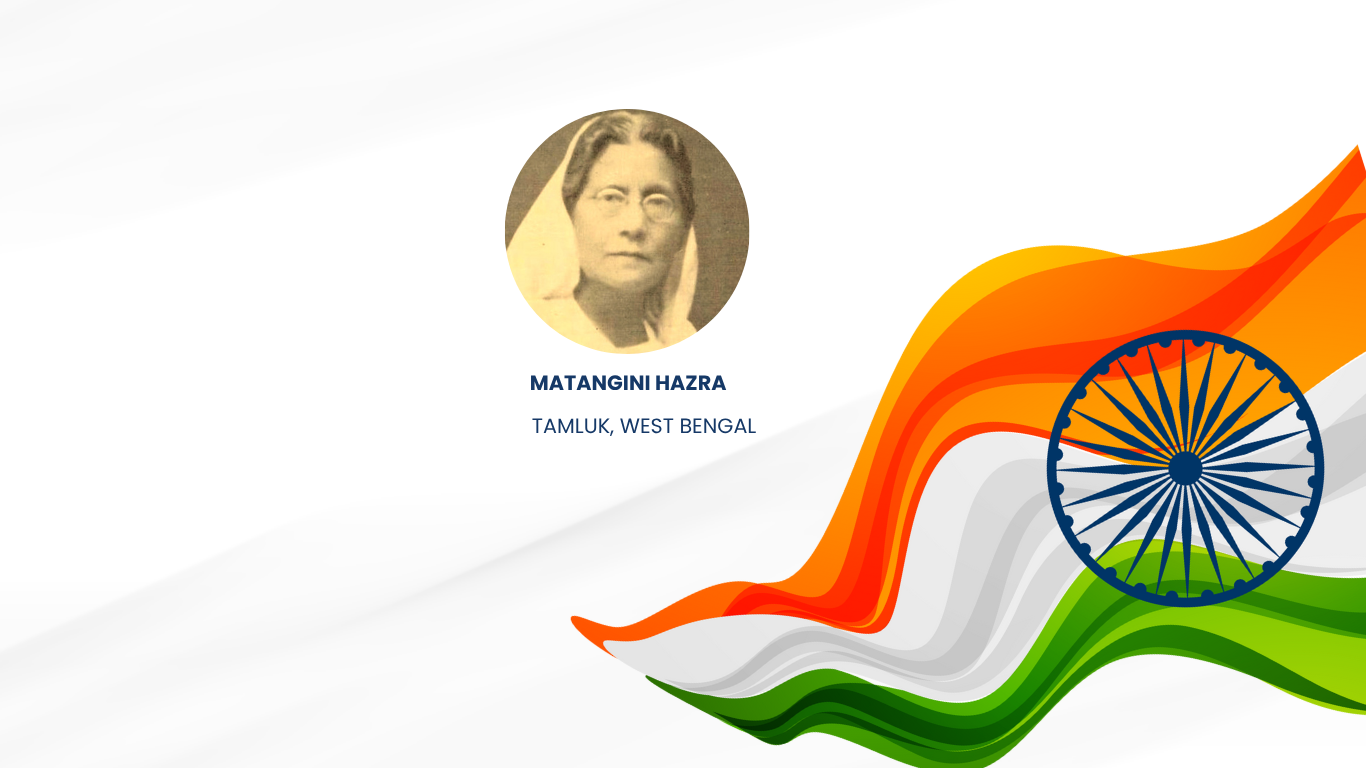When we talk about India’s struggle for independence, names like Mahatma Gandhi, Subhas Chandra Bose, and Bhagat Singh often come to mind. But the fight for freedom was not won by a few alone—it was shaped by countless unsung heroes, many of whom came from humble backgrounds. One such hero was Matangini Hazra, fondly remembered as Gandhi Buri (Old Lady Gandhi) in Bengal.
Early Life and Struggles
Matangini Hazra was born in 1869 in Hogla, a small village in present-day West Bengal. She came from a poor peasant family and was married off at a young age, as was common in rural India during that era. Widowed early, she lived a simple life, but the winds of nationalism and Gandhian ideals deeply moved her.
Despite her age, poverty, and lack of formal education, Matangini was drawn to the Indian independence movement, especially the Civil Disobedience Movement inspired by Mahatma Gandhi. Her life became a symbol of how ordinary individuals could rise to extraordinary courage when the cause was just.
Role in the Freedom Movement
Matangini Hazra participated actively in protests against British salt laws and later in the Quit India Movement of 1942. She was arrested multiple times for participating in nonviolent demonstrations and for promoting Khadi.
Her most iconic and final act of bravery came during the Quit India Movement when she led a large procession of freedom fighters toward the Tamluk police station. Despite repeated warnings, she continued to march forward carrying the Indian national flag, chanting “Vande Mataram.” British police opened fire, but even after being shot, Matangini kept advancing, holding the flag high, until she collapsed. She died with the tricolour still in her hands.
Legacy and Recognition
Matangini Hazra’s sacrifice is a testament to the spirit of India’s freedom struggle—where even the elderly and the poor refused to bow to colonial oppression. She remains an enduring symbol of courage, patriotism, and women’s role in the independence movement.
In her honour:
- A statue of Matangini Hazra stands in Tamluk, exactly where she fell during the protest.
- Schools, streets, and public institutions across West Bengal bear her name.
- Her story is taught in history lessons to inspire the next generation.
Why Matangini Hazra Matters Today
Matangini Hazra’s life reminds us that the fight for justice is not bound by age, gender, or social status. In a time when many feel powerless in the face of challenges, her example shows that conviction and courage can turn even the most ordinary individual into a national hero.
Key Lessons from Matangini Hazra’s Life
- Age is no barrier to making a difference – She joined protests in her 60s and 70s.
- Nonviolent resistance is powerful – She followed Gandhian principles till her last breath.
- Courage inspires generations – Her actions continue to motivate people today.
#MatanginiHazra #FreedomStruggle #IndianHistory #UnsungHeroes #VandeMataram #WomenInHistory #IndependenceMovement #UnderTheTree

